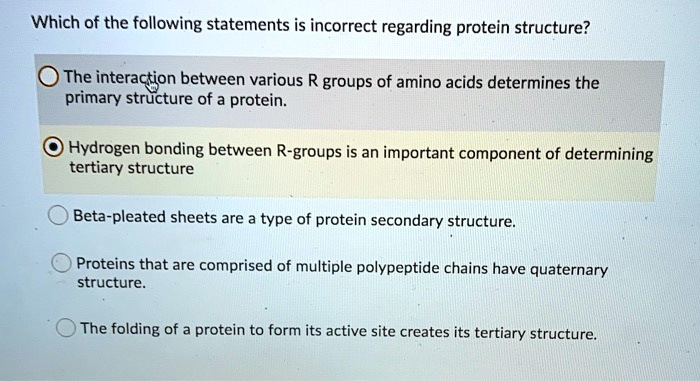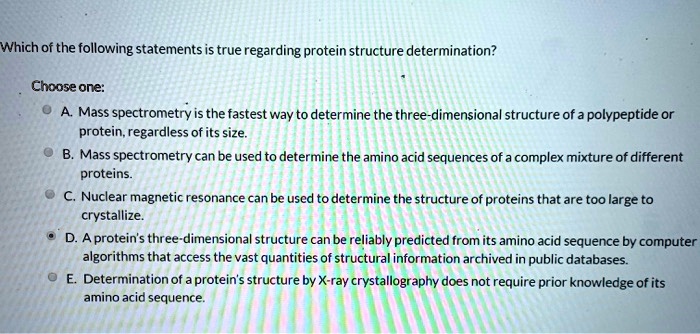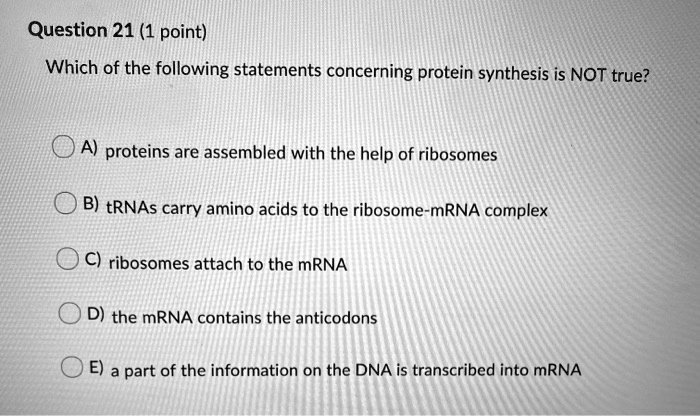Which Statement Is True Regarding Complete Proteins

Imagine strolling through a bustling farmers market, vibrant colors of fresh produce cascading from every stall. The air hums with the lively chatter of vendors and the aroma of ripe fruits and earthy vegetables. You're on a quest for healthy eating, a journey many of us embark on, armed with questions about what truly fuels our bodies.
At the heart of this quest, the concept of complete proteins often surfaces. But navigating the world of protein sources can feel like deciphering a complex code. Which statement is true regarding complete proteins? It's a question that cuts through the noise and gets to the essence of nutritional needs.
Decoding Complete Proteins: The Essential Amino Acid Puzzle
The term "complete protein" refers to a protein source that contains all nine essential amino acids in sufficient quantities. Our bodies cannot synthesize these amino acids, so we must obtain them from our diet. They are the building blocks of protein and play crucial roles in numerous bodily functions, from muscle repair to enzyme production.
The nine essential amino acids are: histidine, isoleucine, leucine, lysine, methionine, phenylalanine, threonine, tryptophan, and valine. Each plays a unique role in maintaining our health. A deficiency in any one of these can lead to various health problems.
Traditional Views: Animal vs. Plant Proteins
Historically, animal proteins such as meat, poultry, fish, eggs, and dairy have been considered complete proteins. This is because they naturally contain all nine essential amino acids in adequate proportions. They were, for a long time, the gold standard in protein discussions.
On the other hand, plant-based proteins were often labeled as "incomplete" because single sources may be low in one or more essential amino acids. This led to the misconception that vegetarians and vegans had to work much harder to get adequate protein.
The Rise of Complementary Proteins and the Shifting Landscape
The narrative has shifted significantly in recent years. Nutrition science has highlighted the concept of complementary proteins. This involves combining different plant-based protein sources to ensure you get all nine essential amino acids.
For instance, beans are often low in methionine, but rich in lysine. Rice, conversely, is low in lysine but rich in methionine. Combining rice and beans, a staple in many cultures, provides a complete protein profile.
Other excellent combinations include: lentils with bread, hummus with pita bread, and peanut butter on whole-wheat toast. The possibilities are vast and delicious.
Beyond Combination: Plant-Based Complete Proteins
While complementary proteins are a powerful tool, several plant-based foods are complete proteins on their own. Quinoa, a South American grain, is one such example. It’s a nutritional powerhouse and a complete protein source.
Soybeans and products derived from them, like tofu, tempeh, and edamame, are also complete proteins. These are staples in many vegetarian and vegan diets. Buckwheat and chia seeds are two other examples of complete proteins.
So, Which Statement Is True? Dissecting Common Misconceptions
Now, let’s address the core question: Which statement is true regarding complete proteins? The answer isn't a simple "yes" or "no." Rather, it’s a nuanced understanding that dispels several myths.
It is incorrect to say that only animal sources provide complete proteins. As discussed, quinoa, soy, and other plant-based sources are complete. It is also incorrect to assume that vegetarians and vegans are automatically protein deficient. With informed choices and mindful combination of plant-based proteins, their protein needs can easily be met.
The most accurate statement is: "Complete proteins are those that contain all nine essential amino acids in sufficient quantities, and can be found in both animal and plant-based sources, either individually or through strategic combination."
The Importance of Protein Diversity
Regardless of your dietary choices, protein diversity is crucial. Relying solely on one protein source, even if it’s complete, may limit your intake of other essential nutrients. Eating a variety of foods from different food groups will ensure you get a broad spectrum of vitamins, minerals, and phytonutrients.
For example, while beef is a complete protein, it is also high in saturated fat. Choosing leaner cuts of meat or incorporating more plant-based proteins into your diet helps balance your nutritional intake. Including a variety of colorful vegetables and fruits in your diet is also important.
Meeting Protein Needs: Practical Considerations
The recommended daily allowance (RDA) of protein is 0.8 grams per kilogram of body weight for adults. However, individual needs may vary based on activity level, age, and overall health status.
Athletes and individuals engaging in intense physical activity may require more protein to support muscle repair and growth. Consulting with a registered dietitian or healthcare professional can provide personalized guidance on your protein needs.
According to the Academy of Nutrition and Dietetics, "Appropriately planned vegetarian, including vegan, diets are healthful, nutritionally adequate, and may provide health benefits for the prevention and treatment of certain diseases."
A Reflective Conclusion: Embracing the Protein Paradigm Shift
Our understanding of complete proteins has evolved beyond simple classifications of "animal" versus "plant." The emphasis is now on nutritional completeness and mindful dietary choices. The key is knowledge and intentionality.
By understanding the role of essential amino acids and embracing the power of complementary proteins, we can all achieve optimal protein intake, regardless of our dietary preferences. It’s a journey of discovery, a step toward better health.
So, as you continue your quest for wholesome eating, remember that protein is not a binary concept. It’s a spectrum of possibilities, waiting to be explored with an open mind and a curious palate. It is, above all, an empowering element in a healthier, more vibrant life.









